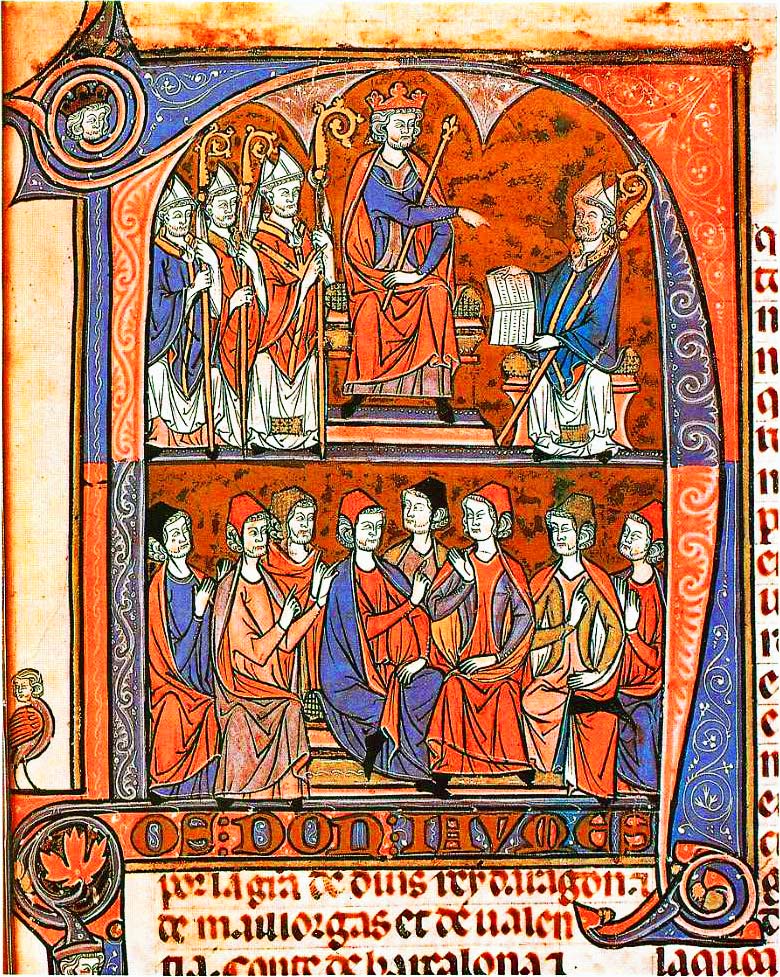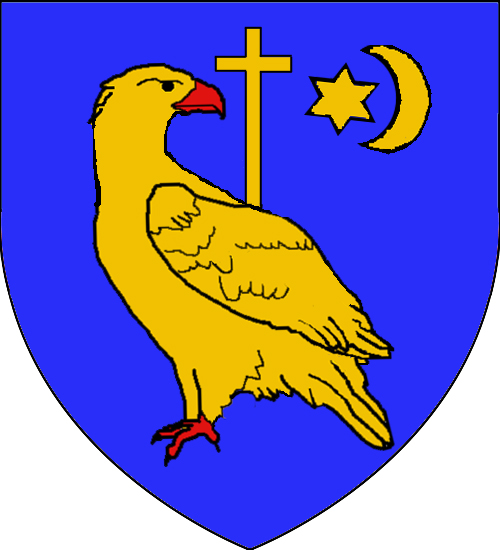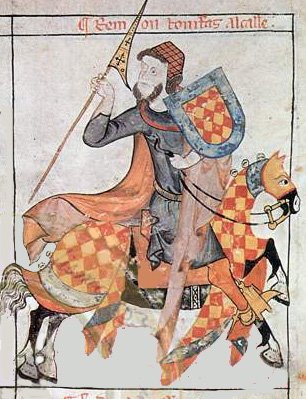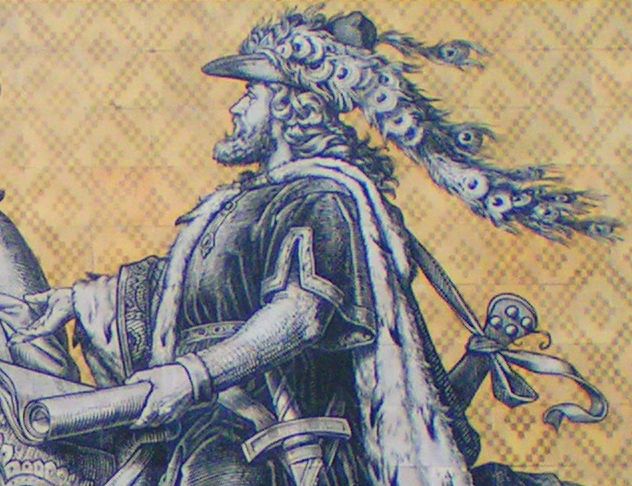|
1247
Year 1247 ( MCCXLVII) was a common year starting on Tuesday (link will display the full calendar) of the Julian calendar. Events By place Europe * War of the Thuringian Succession: The claims on the Ludovingians' inheritance after the death of Henry Raspe, landgrave of Thuringia, leads to a dispute over the succession territories of Thuringia and Hesse, between his niece Sophie of Thuringia and her cousin Henry III (the Illustrious), who claims the territories as fiefs of the Electorate of Mainz. * July 2 – King Béla IV grants territories to the Knights Hospitaller in the Banate of Severin and Hungarian Cumania (according to a document called the Diploma of the Joannites), makes an early mention of Litovoi and other Vlach/Romanian local rulers, in Wallachia and Transylvania. * Summer – Siege of Seville: Castilian forces under King Ferdinand III (the Saint) begin to besiege Seville, the city is isolated and Ramón de Bonifaz sails with 13 galleys up th ... [...More Info...] [...Related Items...] OR: [Wikipedia] [Google] [Baidu] |
Henry Raspe
Henry Raspe (; – 16 February 1247) was the Landgrave of Thuringia from 1231 until 1239 and again from 1241 until his death. In 1246, with the support of the Papacy, he was elected King of the Romans, King of Germany in Anti-king, opposition to Conrad IV of Germany, Conrad IV, but his contested reign lasted a mere nine months. Biography In 1226, Henry's brother Louis IV, Landgrave of Thuringia, died en route to the Sixth Crusade, and Henry became regent for his under-age nephew Hermann II, Landgrave of Thuringia. He managed to expel his nephew and the boy's young mother, St. Elisabeth of Hungary, from the line of succession and ca. 1231 formally succeeded his brother as landgrave. In 1242 Henry, together with King Wenceslaus I of Bohemia, was selected by Emperor Frederick II, Holy Roman Emperor, Frederick II to be administrator of Germany for Frederick's under-age son Conrad. After the papal ban on Frederick imposed by Pope Innocent IV in 1245, Raspe changed sides, and on 22 ... [...More Info...] [...Related Items...] OR: [Wikipedia] [Google] [Baidu] |
Siege Of Seville
The siege of Seville (July 1247 – November 1248) was a 16-month successful investment during the ''Reconquista'' of Seville by forces of Ferdinand III of Castile. Although perhaps eclipsed in geopolitical importance by the rapid capture of Córdoba in 1236, which sent a shockwave through the Muslim world, the siege of Seville was nonetheless the most complex military operation undertaken by Fernando III. It is also the last major operation of the Early Reconquista. The operation also marked the appearance of indigenous naval forces of Castile-León of military significance. In effect, Ramón de Bonifaz was the first admiral of Castile, although he never held an official title of that kind. In 1246, after the conquest of Jaén, Seville and Granada were the only major cities in the Iberian Peninsula that had not acquiesced to Christian suzerainty. Of the two, Granada would remain semi-independent until 1492. During the summer of 1247, Castilian armies isolated the city to th ... [...More Info...] [...Related Items...] OR: [Wikipedia] [Google] [Baidu] |
Litovoi
Litovoi, also Litvoy, was a Vlach/Romanian ''voivode'' in the 13th century whose territory comprised northern Oltenia in today's Romania. He is mentioned for the first time in the Diploma of the Joannites issued by king Béla IV of Hungary (1235–1270) on 2 July 1247. The diploma granted territories to the Knights Hospitaller in the Banate of Severin and ''Cumania'', ''“with the exception of the land of the kenazate of Voivode Litovoi,”'' which the king left to the Vlachs ''“as they had held it”''. Name The king’s diploma also refers to the ''kenazate''s of Farcaș and John and to a certain ''voivode'' Seneslau. Although the names of Litovoi and Seneslau are of Slavic origin, they are expressly said to be Vlachs ''(Olati)'' in the king's diploma. It seems that Litovoi was the most powerful of all the above local rulers. His territories were exempted from the grant to the knights, but half of the royal tax generated by his land ''(terra Lytua)'' was assigned to the H ... [...More Info...] [...Related Items...] OR: [Wikipedia] [Google] [Baidu] |
Ludovingians
The Ludovingians or Ludowingians (german: Ludowinger) were the ruling dynasty of Thuringia and Hesse during the 11th to 13th centuries. Their progenitor was Louis the Bearded who was descended from a noble family whose genealogy cannot be precisely determined. Like the related Reginbodo family, they had a close relationship with the Archbishopric of Mainz and also had estates on the Middle Main. The male line of Ludovingians was extinguished on the death of Henry Raspe in 1247, leading to the War of the Thuringian Succession. History Around 1040 Louis the Bearded received a fief north of the Thuringian Forest and had the (now ruined) castle of Schauenburg near Friedrichroda. However these origins are legendary and based solely on unverifiable Reinhardsbrunn sources. Around 1080, Louis' sons, Louis the Springer and Beringer of Sangerhausen, founded the Abbey of Kloster Schönrain in the land of their ancestors, Main Franconia. In a deed dated 1100 the brothers are named ... [...More Info...] [...Related Items...] OR: [Wikipedia] [Google] [Baidu] |
Thuringia
Thuringia (; german: Thüringen ), officially the Free State of Thuringia ( ), is a state of central Germany, covering , the sixth smallest of the sixteen German states. It has a population of about 2.1 million. Erfurt is the capital and largest city. Other cities are Jena, Gera and Weimar. Thuringia is bordered by Bavaria, Hesse, Lower Saxony, Saxony-Anhalt, and Saxony. It has been known as "the green heart of Germany" () from the late 19th century due to its broad, dense forest. Most of Thuringia is in the Saale drainage basin, a left-bank tributary of the Elbe. Thuringia is home to the Rennsteig, Germany's best-known hiking trail. Its winter resort of Oberhof makes it a well-equipped winter sports destination – half of Germany's 136 Winter Olympic gold medals had been won by Thuringian athletes as of 2014. Thuringia was favoured by or was the birthplace of three key intellectuals and leaders in the arts: Johann Sebastian Bach, Johann Wolfgang von Goethe, and Fried ... [...More Info...] [...Related Items...] OR: [Wikipedia] [Google] [Baidu] |
Banate Of Severin
The Banate of Severin or Banate of Szörény ( hu, Szörényi bánság; ro, Banatul Severinului; la, Banatus Zewrinensis; bg, Северинско банство, ; sr, Северинска бановина, ) was a Hungarian political, military and administrative unit with a special role in the initially anti-Bulgarian, latterly anti- Ottoman defensive system of the medieval Kingdom of Hungary. It was founded by Prince Béla in 1228. Territory The Banate of Severin was a march (or a border province) of the medieval Kingdom of Hungary between the Lower Danube and the Olt River (in present-day Oltenia in Romania). A charter of grant, issued on 2 June 1247 to the Knights Hospitallers, mentioned the Olt as its eastern border. The Knights received the "Land of Severin" ''(Terra de Zeurino)'', along with the nearby mountains, from Béla IV of Hungary. The king had described the same region as a "deserted and depopulated" land in a letter to Pope Gregory IX on 7 June 1238. Moder ... [...More Info...] [...Related Items...] OR: [Wikipedia] [Google] [Baidu] |
War Of The Thuringian Succession
The War of the Thuringian Succession (German: ''Thüringisch-hessischer Erbfolgekrieg'') (1247–1264) was a military conflict over a successor to the last Landgrave of Thuringia for control of the state of Thuringia (now in modern-day Germany). Cause of the conflict With the death of the childless Landgrave Henry Raspe in 1247, the Ludowingian line of Thuringian landgraves became extinct in the male line. His property included not only large parts of Thuringia, but also the Countship of Hesse had come into Ludowingian possession through the female line. In 1122, before his acquisition of the title of Landgrave, Count Louis I of Thuringia had married Hedwig of Gudensberg, the female heir of the Hessian comital family of the Gisonen. The Gisonen, whose lands were initially mainly in the upper Lahn area, had previously come into the significant inheritance of Count Werner in Lower Hesse. Then, through the marriage of Giso IV with Kunigunde of Bilstein, they had also acquired wides ... [...More Info...] [...Related Items...] OR: [Wikipedia] [Google] [Baidu] |
Béla IV Of Hungary
Béla IV (1206 – 3 May 1270) was King of Hungary and Croatia between 1235 and 1270, and Duke of Styria from 1254 to 1258. As the oldest son of King Andrew II, he was crowned upon the initiative of a group of influential noblemen in his father's lifetime in 1214. His father, who strongly opposed Béla's coronation, refused to give him a province to rule until 1220. In this year, Béla was appointed Duke of Slavonia, also with jurisdiction in Croatia and Dalmatia. Around the same time, Béla married Maria, a daughter of Theodore I Laskaris, Emperor of Nicaea. From 1226, he governed Transylvania as duke. He supported Christian missions among the pagan Cumans who dwelled in the plains to the east of his province. Some Cuman chieftains acknowledged his suzerainty and he adopted the title of King of Cumania in 1233. King Andrew died on 21 September 1235 and Béla succeeded him. He attempted to restore royal authority, which had diminished under his father. For this purpose, he revise ... [...More Info...] [...Related Items...] OR: [Wikipedia] [Google] [Baidu] |
Knights Hospitaller
The Order of Knights of the Hospital of Saint John of Jerusalem ( la, Ordo Fratrum Hospitalis Sancti Ioannis Hierosolymitani), commonly known as the Knights Hospitaller (), was a medieval and early modern Catholic Church, Catholic Military order (religious society), military order. It was headquartered in the Kingdom of Jerusalem until 1291, on the island of Hospitaller Rhodes, Rhodes from 1310 until 1522, in Hospitaller Malta, Malta from 1530 until 1798 and at Saint Petersburg from 1799 until 1801. Today several organizations continue the Hospitaller tradition, specifically the mutually recognized orders of St. John, which are the Sovereign Military Order of Malta, the Order of Saint John (chartered 1888), Most Venerable Order of the Hospital of Saint John, the Order of Saint John (Bailiwick of Brandenburg), Bailiwick of Brandenburg of the Chivalric Order of Saint John, the Order of Saint John in the Netherlands, and the Order of Saint John in Sweden. The Hospitallers arose ... [...More Info...] [...Related Items...] OR: [Wikipedia] [Google] [Baidu] |
Ramón De Bonifaz
Ramón de Bonifaz (1196-1252 or 1256) was a medieval Spanish naval leader best known for breaking a river barricade, leading to the capture of Seville from the Almohad Caliphate.Ruiz, p. 177. Bonifaz made his fortune as a merchant in Burgos, a city on the pilgrimage route to Santiago de Compostela, and may have descended from one of the many French or Italian families that settled along the sacred way. He had achieved clear financial success by 1227 when he purchased an extremely expensive house. Having made his fortune, Bonifaz served as '' alcalde'' or mayor of the city for much of the early thirteenth century. In 1247, King Ferdinand III of Castile and León ordered Bonifaz to organize a fleet to join in the reconquista of Seville. Bonifaz drew his motley navy mostly from ships in the Bay of Biscay and took them up the Guadalquivir River to attack the Almohad held city. Moorish ships from Seville, Ceuta, and Tangier met Bonifaz at the mouth of the Guadalquivir.Irving, p. ... [...More Info...] [...Related Items...] OR: [Wikipedia] [Google] [Baidu] |
Hesse
Hesse (, , ) or Hessia (, ; german: Hessen ), officially the State of Hessen (german: links=no, Land Hessen), is a States of Germany, state in Germany. Its capital city is Wiesbaden, and the largest urban area is Frankfurt. Two other major historic cities are Darmstadt and Kassel. With an area of 21,114.73 square kilometers and a population of just over six million, it ranks seventh and fifth, respectively, among the sixteen German states. Frankfurt Rhine-Main, Germany's second-largest metropolitan area (after Rhine-Ruhr), is mainly located in Hesse. As a cultural region, Hesse also includes the area known as Rhenish Hesse (Rheinhessen) in the neighbouring state of Rhineland-Palatinate. Name The German name '':wikt:Hessen#German, Hessen'', like the names of other German regions (''Schwaben'' "Swabia", ''Franken'' "Franconia", ''Bayern'' "Bavaria", ''Sachsen'' "Saxony"), derives from the dative plural form of the name of the inhabitants or German tribes, eponymous tribe, the Hes ... [...More Info...] [...Related Items...] OR: [Wikipedia] [Google] [Baidu] |
Henry III, Margrave Of Meissen
Henry III, called Henry the Illustrious (''Heinrich der Erlauchte'') (c. 1215 – 15 February 1288) from the House of Wettin was Margrave of Meissen and last Margrave of Lusatia (as Henry IV) from 1221 until his death; from 1242 also Landgrave of Thuringia. Life Born probably at the Albrechtsburg residence in Meissen, Henry was the youngest son of Margrave Theodoric I, Margrave of Meissen and his wife Jutta, daughter of Landgrave Hermann I of Thuringia. In 1221 he succeeded his father as Margrave of Meissen and Lusatia, at first under guardianship of his maternal uncle, Landgrave Louis IV of Thuringia, and after his death in 1227, under that of Duke Albert I of Saxony. In 1230 he was legally proclaimed an adult. Henry had his first combat experience in sometime around 1234, while on crusade in Prussia, fighting against the Pomesanians. His pilgrimage and company is well-documented by Peter of Dusburg, and it resulted in the construction of Balga castle, an important administ ... [...More Info...] [...Related Items...] OR: [Wikipedia] [Google] [Baidu] |






